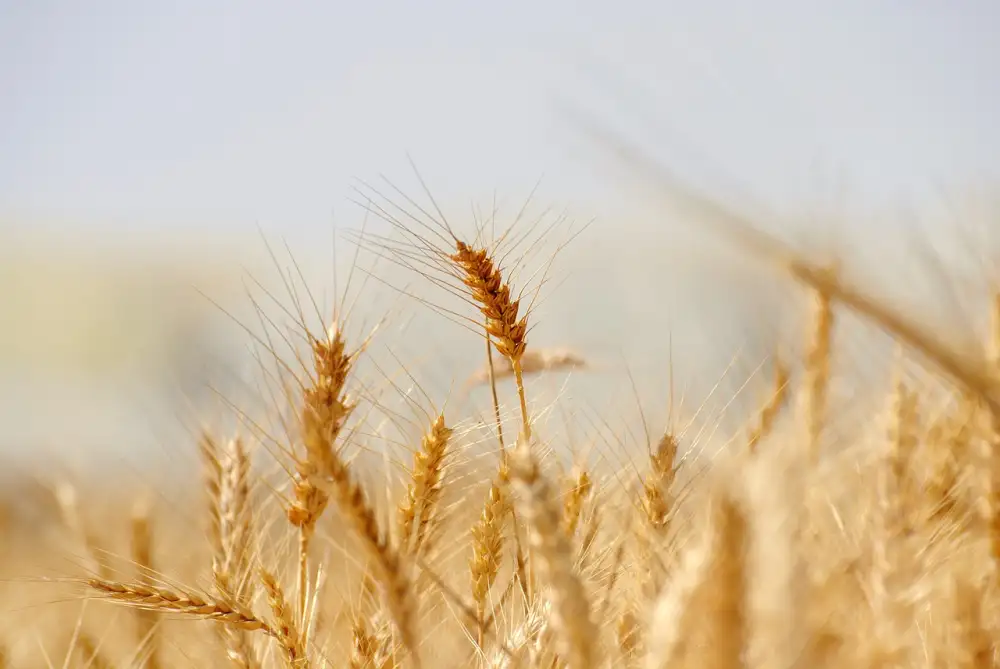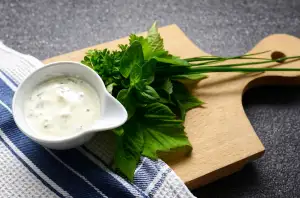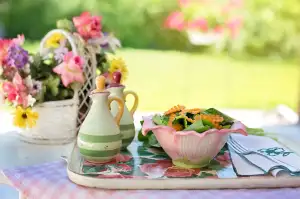Corn Flour Delights: Elevate Your Recipes with this Versatile Ingredient!

Corn flour, also known as cornmeal or maize flour, is a versatile ingredient that has been used in cooking for centuries. It is made from the dried kernels of corn that have been ground into a fine powder. With its mild flavor and smooth texture, corn flour adds a unique taste and consistency to a variety of dishes. Whether you're baking breads, making tortillas, or thickening sauces, corn flour is sure to elevate your recipes to new heights. In this article, we will explore the process of making corn flour, its nutritional benefits, culinary uses, popular recipes, and provide some tips for using it in your cooking adventures. So let's dive in and discover the wonders of corn flour!
How Corn Flour is Made
Corn flour is made from dried corn kernels that have been ground into a fine powder. The process begins by selecting high-quality corn, which is then thoroughly cleaned and washed to remove any impurities. After cleaning, the corn is soaked in water for several hours to soften the kernels. Once softened, the corn is drained and dried before being milled into a fine powder. This milling process involves grinding the dried corn kernels using specialized machinery to produce a smooth and uniform texture. The resulting powder is then sifted to remove any remaining coarse particles, ensuring a consistent and fine quality product. Corn flour can be made from either yellow or white corn, depending on preference, and it is commonly used in various culinary applications due to its versatile nature and distinct flavor profile.
Nutritional Benefits of Corn Flour
Corn flour is not only a versatile ingredient in the kitchen, but it also offers several nutritional benefits. It is a good source of carbohydrates, providing energy to fuel our bodies. Additionally, corn flour is low in fat and cholesterol-free, making it a healthier option compared to other flours. It is also rich in dietary fiber, which aids digestion and helps maintain a healthy weight. Furthermore, corn flour contains essential vitamins and minerals such as vitamin B6, iron, and magnesium. Incorporating corn flour into your recipes can not only enhance the taste but also contribute to a well-balanced diet.
Culinary Uses of Corn Flour
Corn flour is a versatile ingredient that can be used in a variety of culinary applications. Its fine texture and neutral flavor make it a popular choice for thickening sauces, soups, and gravies. It can also be used as a coating for frying foods, giving them a crispy and golden exterior.
In baking, corn flour can be combined with other flours to add moisture and tenderness to cakes, cookies, and breads. It can also be used as a gluten-free alternative to wheat flour in recipes.
Corn flour is commonly used in Mexican cuisine to make tortillas, tamales, and cornbread. It adds a distinct flavor and texture to these dishes, making them even more delicious.
Additionally, corn flour can be used as a binding agent in vegetarian or vegan recipes. It helps hold ingredients together in dishes like veggie burgers or meatless meatballs.
The versatility of corn flour makes it an essential pantry staple for both professional chefs and home cooks alike. Its ability to enhance the texture and taste of various dishes makes it an invaluable ingredient in the kitchen.
Popular Recipes using Corn Flour
Corn flour is a versatile ingredient that can be used in a variety of recipes to add texture and flavor. Here are some popular recipes that make use of this delightful ingredient:
1. Cornbread: This classic recipe combines corn flour with other ingredients like buttermilk, eggs, and butter to create a moist and flavorful bread that pairs well with soups, stews, or simply enjoyed on its own.
2. Tortillas: Corn flour is the key ingredient in making authentic Mexican tortillas. Mix it with water and salt to form a dough, then roll it out into thin circles and cook on a hot griddle until lightly browned.
3. Tempura: For a crispy and light batter for deep-frying vegetables or seafood, corn flour can be combined with all-purpose flour, baking powder, and cold water to create a tempura batter that adds a delicious crunch to your dishes.
4. Pancakes: Add corn flour to your pancake batter for an interesting twist on the traditional breakfast treat. The corn flour adds a slightly sweet flavor and a delicate texture that will have everyone asking for seconds.
5. Fried Chicken: To achieve an extra crispy coating on your fried chicken, mix corn flour with spices like paprika, garlic powder, and onion powder before dredging the chicken pieces in the mixture. Fry until golden brown for a mouthwatering dish.
These recipes showcase just some of the many ways you can incorporate corn flour into your cooking repertoire. Its versatility makes it an essential ingredient in any kitchen!
Tips for Using Corn Flour in Cooking
1. Use corn flour as a thickening agent: Corn flour is excellent for thickening sauces, gravies, and soups. To avoid clumps, mix it with a little cold water before adding it to your dish.
2. Substitute all-purpose flour with corn flour: If you're looking for a gluten-free alternative or want a lighter texture, replace all-purpose flour with corn flour in recipes like pancakes, waffles, and cakes.
3. Make crispy coatings: Corn flour can give your fried foods a delightful crunch. Mix it with spices and herbs to create a flavorful coating for chicken, fish, or vegetables.
4. Enhance the texture of baked goods: Add a small amount of corn flour to your bread dough or cookie batter to improve their texture and make them softer and more tender.
5. Use it as a binder: When making meatballs or veggie patties, add some corn flour to help bind the ingredients together and prevent them from falling apart during cooking.
6. Dust surfaces before rolling dough: Prevent sticking by dusting your work surface with corn flour when rolling out dough for pastries or pasta.
7. Create gluten-free desserts: Experiment with corn flour in dessert recipes like puddings, custards, and fruit crisps to achieve a gluten-free option that still maintains its deliciousness.
By following these tips, you can elevate your culinary skills and explore the versatility of corn flour in various dishes. Enjoy experimenting with this ingredient and discover new ways to enhance the flavors and textures of your favorite recipes!
In conclusion, corn flour is a versatile ingredient that can elevate your recipes to new heights. Its fine texture and neutral taste make it suitable for a wide range of dishes, from baked goods to savory dishes. Not only does it add a unique flavor and texture, but it also offers several nutritional benefits. Whether you are looking to thicken sauces, coat fried foods, or bake delicious treats, corn flour is a must-have in your pantry. So go ahead and experiment with this amazing ingredient and take your culinary skills to the next level!
Published: 26. 11. 2023
Category: Recipes



